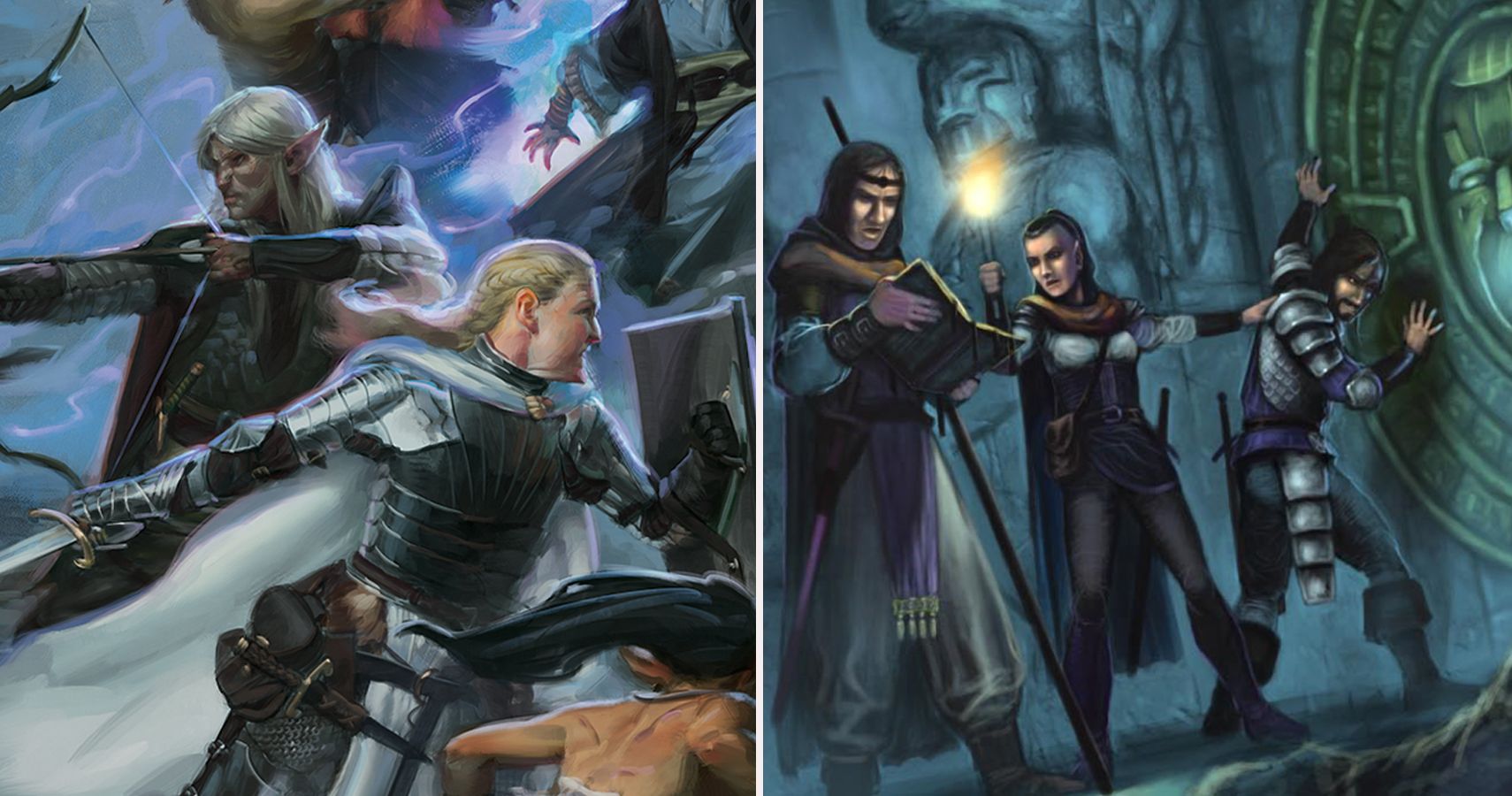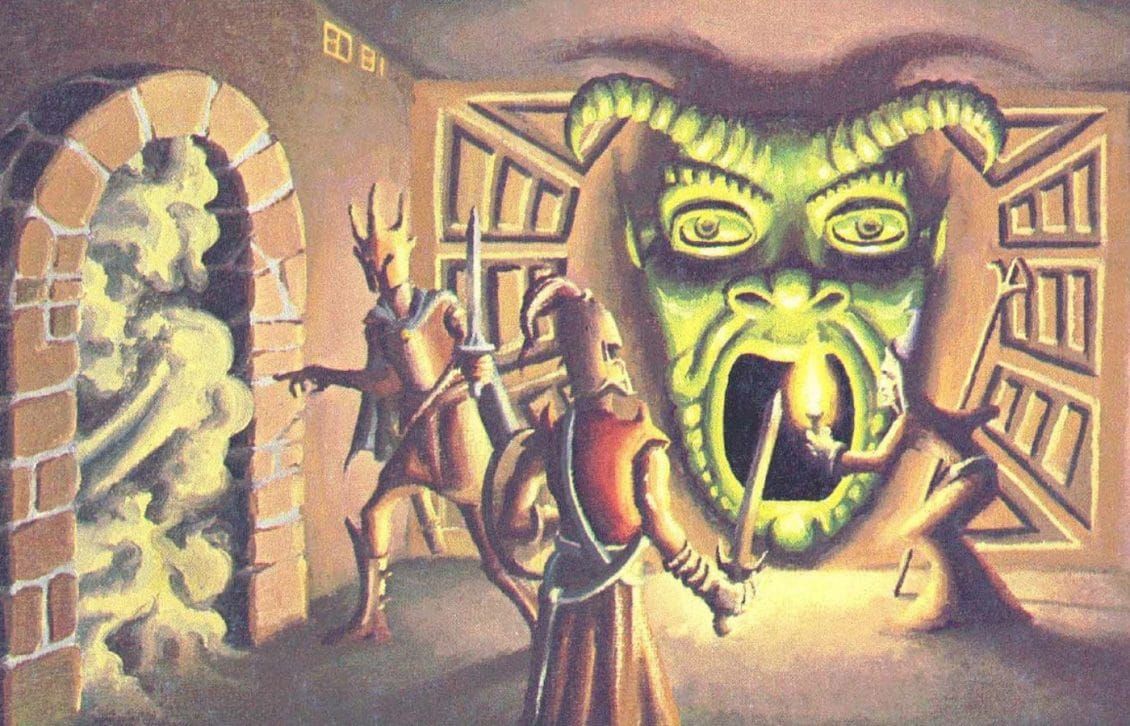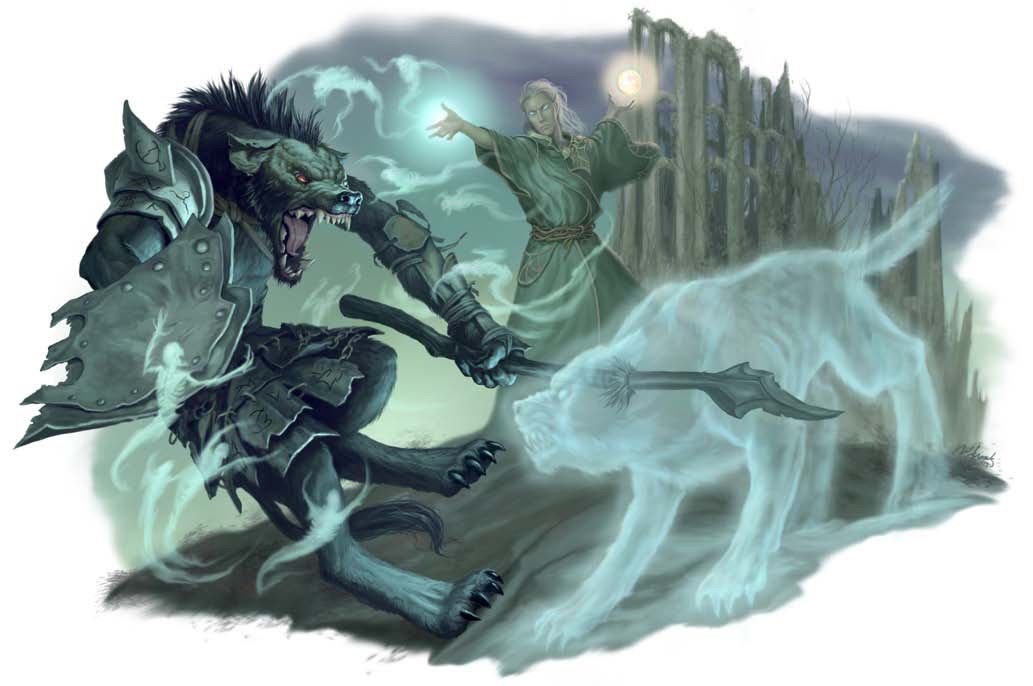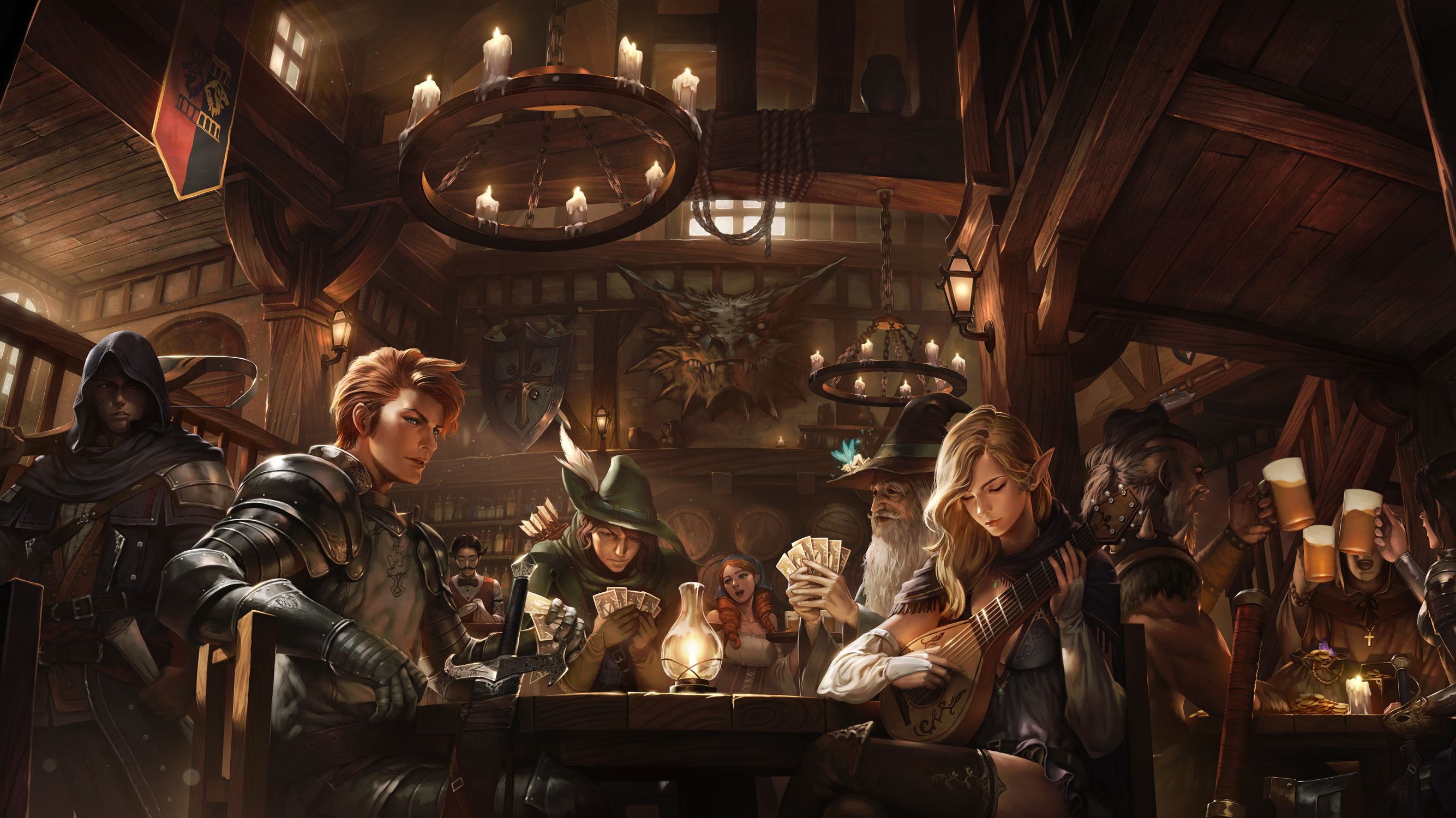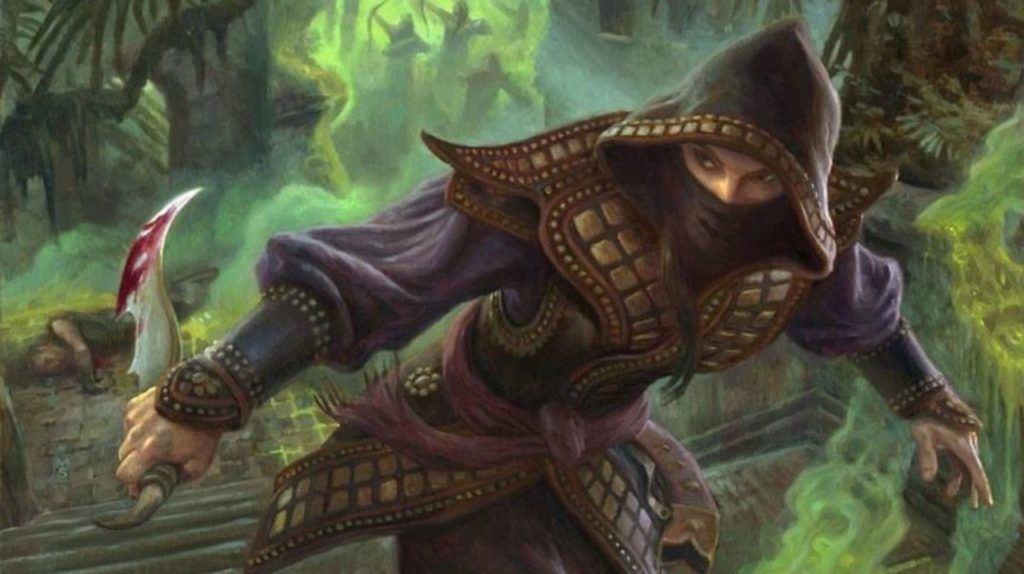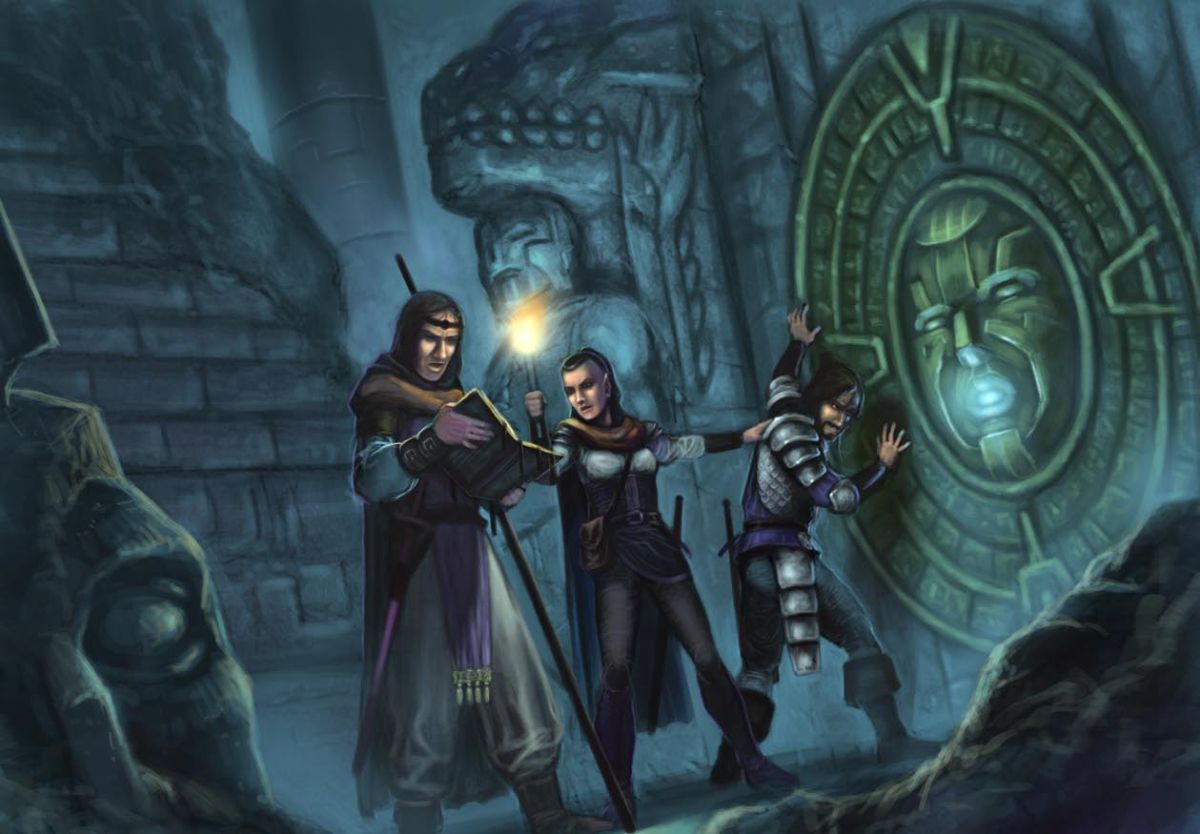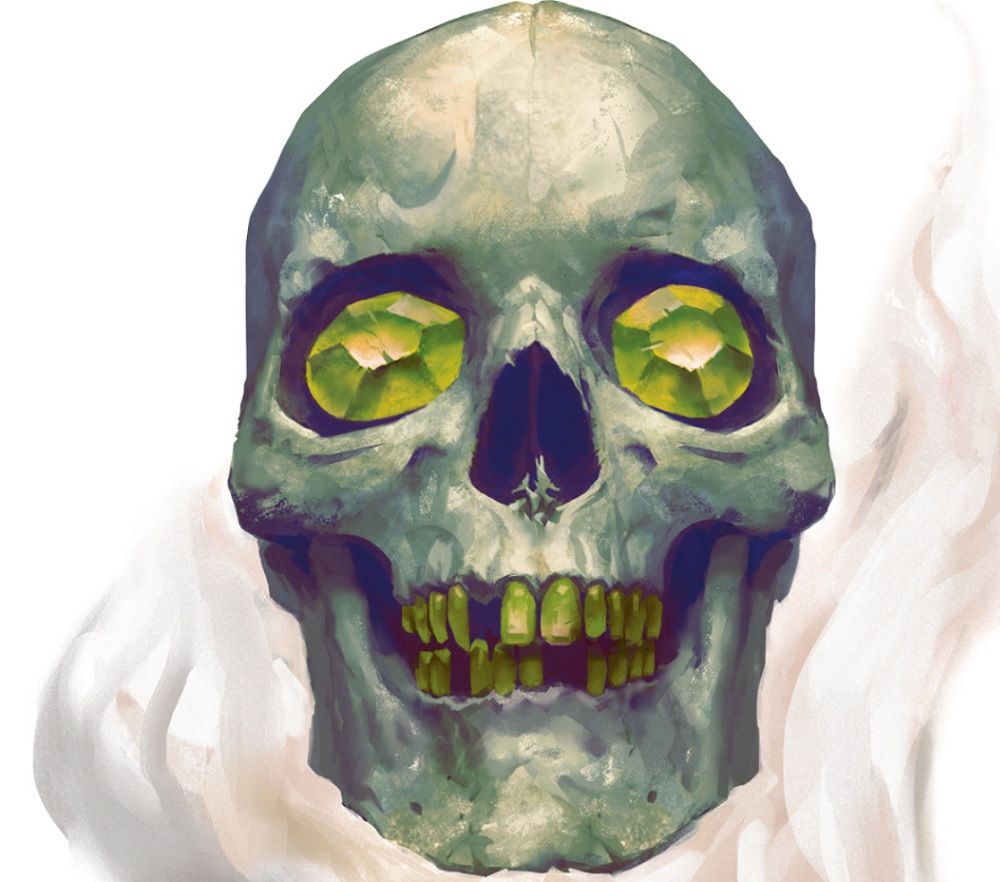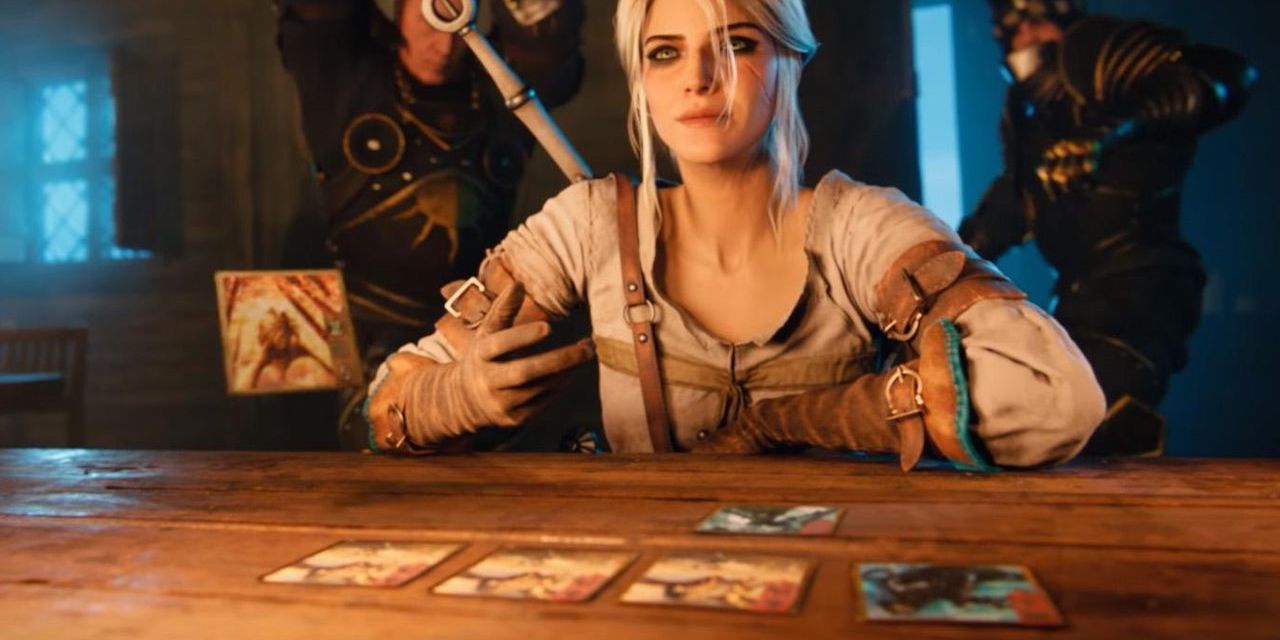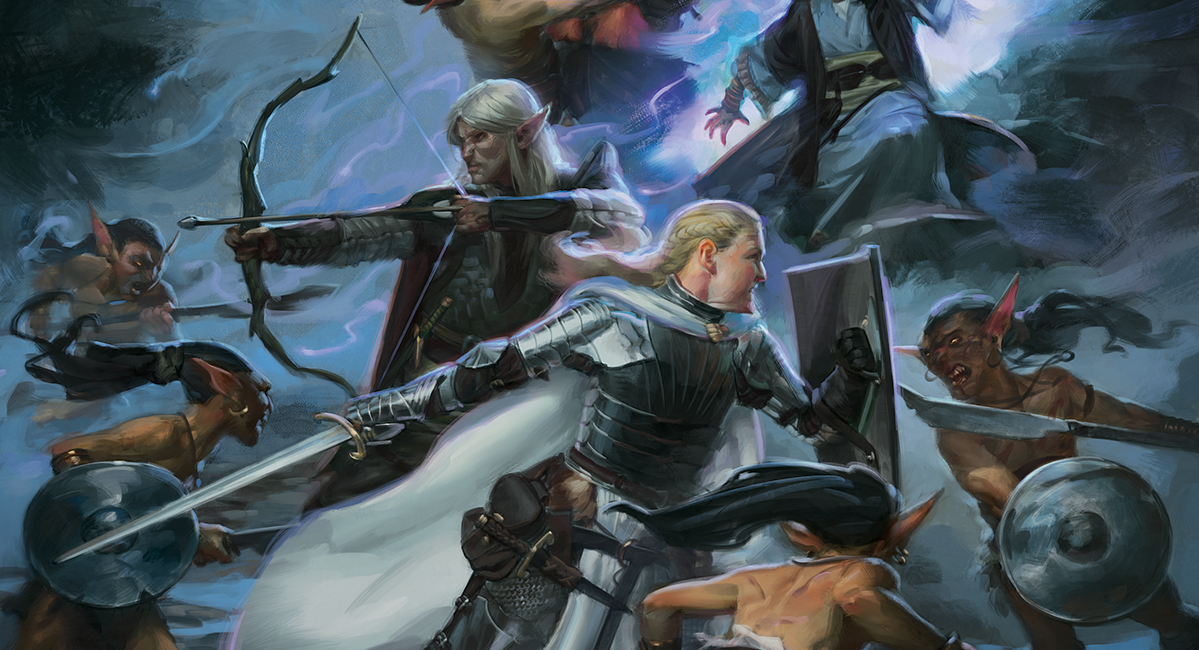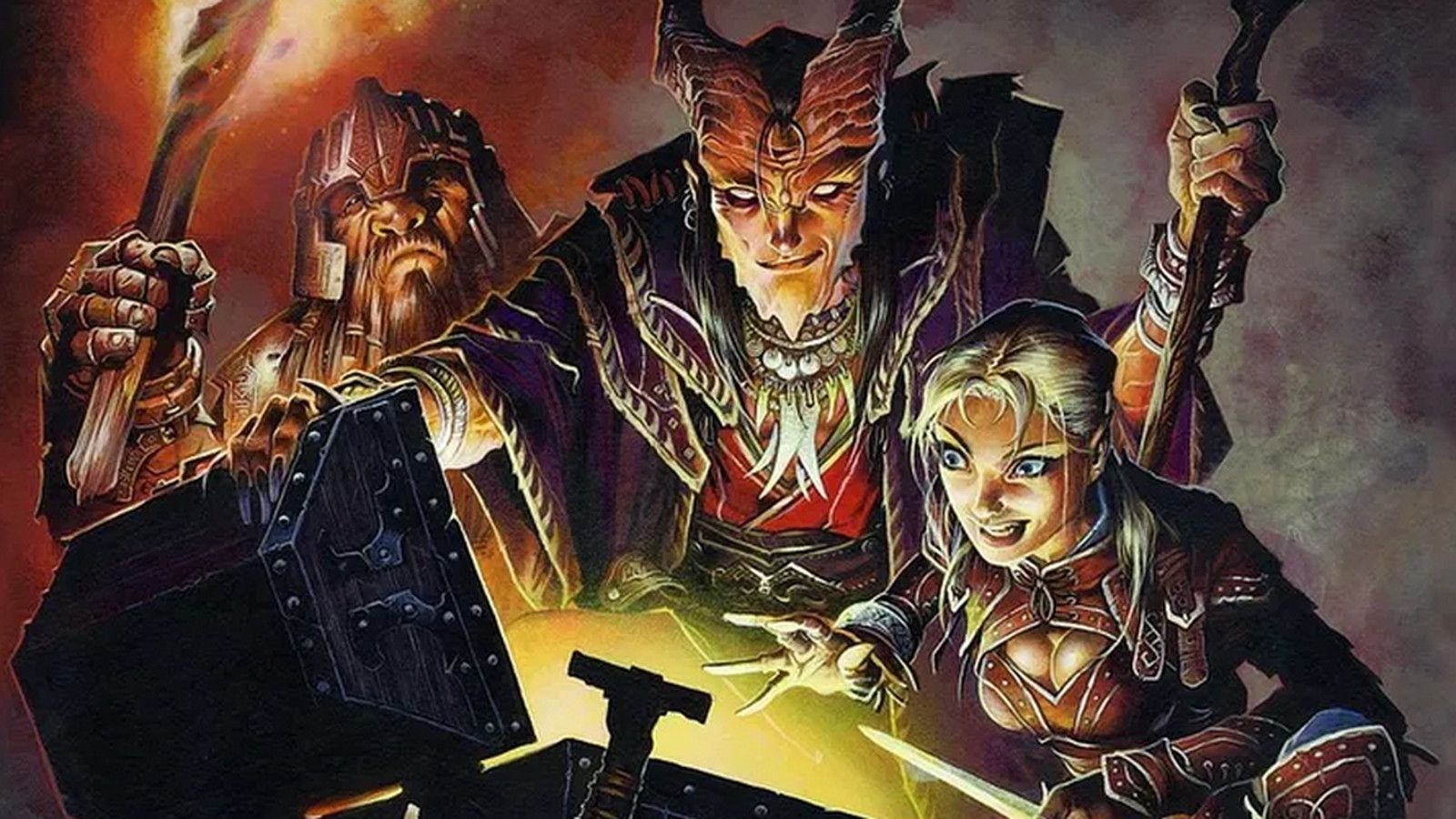Puzzles in Dungeons & Dragons are a great way to challenge players in a way that doesn't ultimately boil down to stats and random dice rolls. This is especially true for high-level parties that can laugh off most combat encounters.
But experienced characters with high-level spells and abilities can still power their way through many puzzles. Even the players themselves will become familiar with the tropes of D&D and harder to surprise. A good DM will think outside the box and come up with new ways to challenge their players. Here are a few ideas for puzzle types to give even an experienced party pause for thought.
10 A Moving Parts Dungeon
Think bigger than secret doors or pit traps. A dungeon in which whole sections change - some areas shift up or down levels, rooms rotate, passages change destination - will confuse even veteran adventurers, who will have to figure out what is going on and how to predict it. It could be magical in nature, or the dungeon could be akin to clockwork.
Players that can figure out the timing of the changes (or the mechanisms to control them) should be rewarded by finding safe rest places, hidden treasures or shortcuts. Of course, some dungeon shifts could unleash traps or monsters.
9 An Illusion
Illusions are an old D&D trick but they need to be used intelligently to challenge an experienced party. The best way to use illusions is in combination with all too real monsters or traps. Keep the players guessing, and they must just 'disbelieve' a very real threat in the confusion.
Mix in illusions with other magic effects and disguise the danger or treasure as something routine. That way a simple detect magic won't reveal it right away. Don't feel limited to the illusion spells available to players either. Gods, forgotten magics, alien races or curses can deceive beyond the power of simple mortals.
8 A Murder Mystery
Puzzles aren't only found in dungeons. They can also take place in town or other civilized areas. The murder mystery may be an old genre but can be a refreshing puzzle to pull in D&D, in which the PCs are usually just doing all the murdering.
There are plenty of classic books and movies for inspiration, but make sure that the players have something to gain from solving the mystery. To add extra spice, have a PC or two fall under suspicion, and some suspects that have something to hide, even if they are innocent of the murder. Remember, even if the party can do tricks like reading minds, speaking the with dead, etc., a high-level murderer can also have tricks to foil these... and frame a PC.
7 An Assassination
Less of whodunit than who's gonna do it, at least hopefully. The assassination puzzle can be tricky to set up but rewarding to play through. The players will need some clue that there is a danger - a clue that an assassin is in the area, but not too much information to figure it out. As the days go by, the players must figure out who the target is and protect them.
The classic AD&D adventure The Assassin's Knot can be useful for planning your own assassination puzzle. Play it similar to a murder mystery, with red herrings, false leads, and assassins with a range of abilities that can counter the obvious magic tricks - they're professionals, after all.
6 Multi-room Puzzles
''Don't split the party'' is a cliche piece of advice in Dungeons and Dragons, but you can make it worth your player's while by tempting them with a long-distance puzzle. For example, pulling down a set of levers in one room could cause panels to appear in another, maybe even a portcullis or obstacle go down between them.
Working out puzzles like this will test the player's thinking and communication abilities. Don't allow metagaming, their characters must be able to communicate. While they're separated, wandering monsters can show up to remind them why the cliche is so oft-repeated.
5 Puzzle Monster
A puzzle monster is a monster that can't be normally beaten down but needs to have its weaknesses figured out first. The black pudding, which is vulnerable to fire but becomes deadlier when it with weapons, is a classic example of a puzzle monster. The demi-lich is one of the most infamous.
Be fair. A puzzle monster's weakness should be discernable by some trial and error or lore research, even if players need to retreat and return. Greek myths are good inspiration. Consider Medusa, beaten with a mirrored shield (which wouldn't work that way in D&D), or Antaeus, the son of earth who was vulnerable when lifted off the ground.
4 Item Puzzle
An item puzzle can be as small as a Hellraiser puzzle box or as large as the fabled Machine of Lum the Mad. The key thing is that item puzzles can be handled or carried by the players.
Plan what combinations of levers, button presses, rotations, command words and so on produce which effects. Try and use some logic in the combinations and your players should have some fun figuring it out. Make sure there are dangerous effects for bad inputs but some prize for smart players. The machine could be a super-weapon, unlock an important door, or conceal a coveted useful item.
3 Mini Game
A mini-game is a kind of puzzle that operates under different rules than D&D. This can be worked into the story literally. Win a game of cards, Witcher 3-style, against an NPC or monster. Command a giant game of chess in the dungeon by directing golem pieces from a control room, or match numbers and symbols to open a door.
This challenges the players beyond their character abilities but doesn't have to be an actual game in-universe. For example a party that ends up leading a mercenary army can be an excuse to run an entire miniatures wargame, or be a simple logic challenge where the players decide the best places to deploy their troops.
2 Nilbog Monsters
The nilbog is a variety of puzzle monster that makes it opposite day in D&D. It looks like an ordinary goblin, but is affected by a reality-warping field. It is healed, rather than damaged, by weapons and spells (and harmed by healing). Adventurers may be compelled to offer their treasure and items to a nilbog instead of looting the lair.
Nilbog variants can be used for other monsters, but don't overdo it. Instead, a single encounter with a nilbog like monsters should be a puzzle for players to think differently. They should be mixed in with normal variants so the effect isn't immediately obvious.
1 Timed Puzzles
A session can be held up completely by a puzzle that proves too challenging, especially if only some of the players are invested in solving it. That's not a whole lot of fun, and if you're worried about this, then be sure to put some pressure on the party with a timer.
The timer can be a literal ticking clock, rising water levels, closing walls or something more subtle. Ideally, running out the clock should only be a minor setback, not a TPK. The idea of a timer should be to focus the party's attention and move on if they can't solve it.

